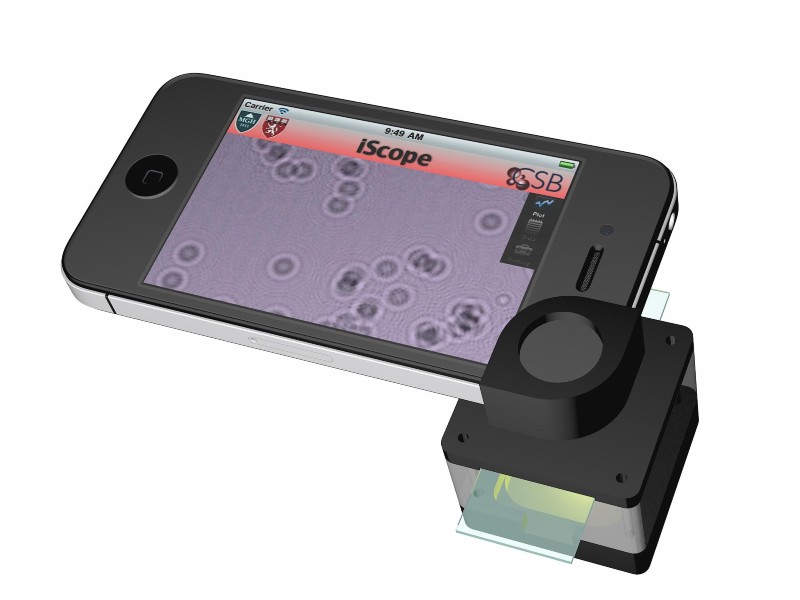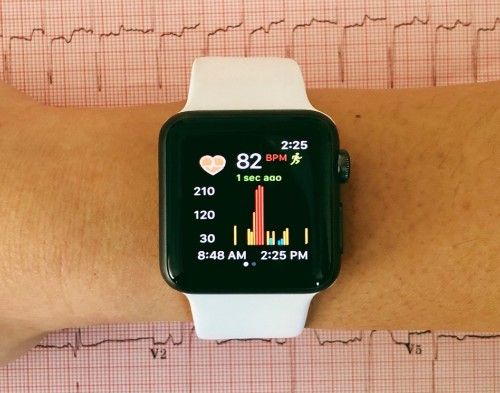- What is telehealth?
- How can telehealth technologies improve medical care?
- What telehealth and POC technologies are NIBIB-funded researchers developing to improve future healthcare?
What is telehealth?
Telehealth is broadly defined as the use of communications technologies to provide health care at a distance. Telehealth has become a valuable tool thanks to combined advances in communications, computer science, informatics, and medical technologies.

Telehealth often involves remote monitoring of blood pressure, heart rate, and other measurements obtained by a device worn by the patient and electronically sent to medical personnel. Smartphones and other smart personal devices are increasingly utilized for the collection, dissemination and even analysis of health status due to their increasing presence around the globe, even in remote, underserved communities.
In the last several years virtual visits between doctors and patients have become very common, especially with the onset of the COVID-19 pandemic. The willingness of physicians, patients and insurers to embrace virtual medicine is likely to cause it to remain a popular option in healthcare.
How can telehealth technologies improve medical care?
Teleconsultations allow a physician in a remote area to receive advice from a specialist at a distant location about special or complex patient conditions. Such consultations can be as simple as a phone call. Increasingly, they involve sophisticated sharing of medical information such as CT, MRI or ultrasound scans. These images can be taken by the local physician, incorporated into an electronic medical record and sent to the specialist for diagnosis and treatment recommendations.
Remote patient monitoring (RPM) enables patient monitoring outside of clinical settings, such as in the home. Patients use or wear sensors that wirelessly collect and transmit physiological data to health professionals. RPM can significantly improve an individual’s quality of life. For example, in diabetes management, the real-time transmission of blood glucose readings enables healthcare providers to intervene when needed and avoid acute events and hospitalizations.
Telehomecare provides the remote care needed to allow people with chronic conditions, dementia, or those at high risk of falling to remain living in their own homes. The approach focuses on reacting to emergency events and raising a help response quickly. Sensors monitor changes in chronic conditions as well as other risks including floods, fires, and gas leaks. Sensors can also alert caregivers if a person with dementia leaves the house. When a sensor is activated, a monitoring center is alerted to take appropriate action such as contacting a caregiver or sending emergency services.
Point-of-care (POC) medicine relies on diagnostic devices that can perform at the time and place of patient care, which includes at home, in doctor’s offices and clinics, and in remote areas without electricity or laboratory equipment. POC devices can detect micronutrient deficiencies, anemia, infectious agents, and even some cancers. Combined with telehealth, POC technologies allow health care workers to test patients and rapidly obtain results without the need for a complex laboratory setting which can result in significant cost-reduction.
What telehealth and POC technologies are NIBIB-funded researchers developing to improve future healthcare?
15-minute paper-based viral diagnostic. Diagnoses of HIV viral load requires RNA amplification from blood in a centralized laboratory, which can delay diagnosis and treatment for weeks. NIBIB scientists are developing a paper-based diagnostic that can quantify HIV viral load in whole blood in 15 minutes. A mobile phone is used to power and control the paper-based RNA extraction and reaction; analyze the fluorescent readout indicating viral load; and store the results in the cloud where they can be accessed by a physician. The $10 test will be broadly applicable for infectious disease diagnosis at the point-of-care.

Wearable mHealth system to improve therapy for knee osteoarthritis. Knee osteoarthritis (OA) is a leading cause of disability because of pain, stiffness, and decreased range of motion. Studies have shown that too excessive or too limited levels of clinically recommended therapy often increase pain, suggesting that each individual has an optimal treatment level. NIBIB-funded engineers have developed a flexible wearable system with one sensor attached to the knee sleeve and a second sensor under the foot insole. The system will gather and assess a patient’s movement biomechanics that affect pain, quality of life, and rehabilitation progression; this will generate clinical data that will enable the development of personalized OA therapy.
Smartphone-based test to diagnose anemia. More than 1.6 billion people have anemia, which increases risk of maternal and infant mortality and impairs cognition in children and adults. Inflammation and iron and B vitamin deficiency each cause anemia, and incorrect treatments may exacerbate the condition. NIBIB-funded researchers are developing AnemiaPhone to assess inflammation, B vitamin, and iron status in one test. A smartphone accessory analyzes a drop of blood on a test strip. The phone camera captures and quantitates the results, which are catalogued so healthcare workers can administer the correct treatment to each individual. The technology is designed to perform in remote settings where anemia is a persistent, debilitating health problem.
Mobile device to avoid heart congestion hospitalization. Atrial fibrillation (AF) and congestive heart failure (HF) are common conditions that frequently occur together and often result in hospitalizations when patients experience shortness of breath. Early warning of congestion would allow cardiologists to adjust patient medications and avoid the need for hospitalization. NIBIB scientists are developing smartphone and smart wearable devices for monitoring patients with AF and HF for early stages of worsening heart congestion. The technology will consist of a smart wrist band and smart ring that will detect heartbeat frequency and amplitude changes that are indicative of impending heart congestion. The data will be submitted by smart phone to cardiologists enabling therapy adjustments to avoid hospitalization and significantly reduce progression to heart failure and the associated morbidity, mortality, and expense.
Updated August 2020
